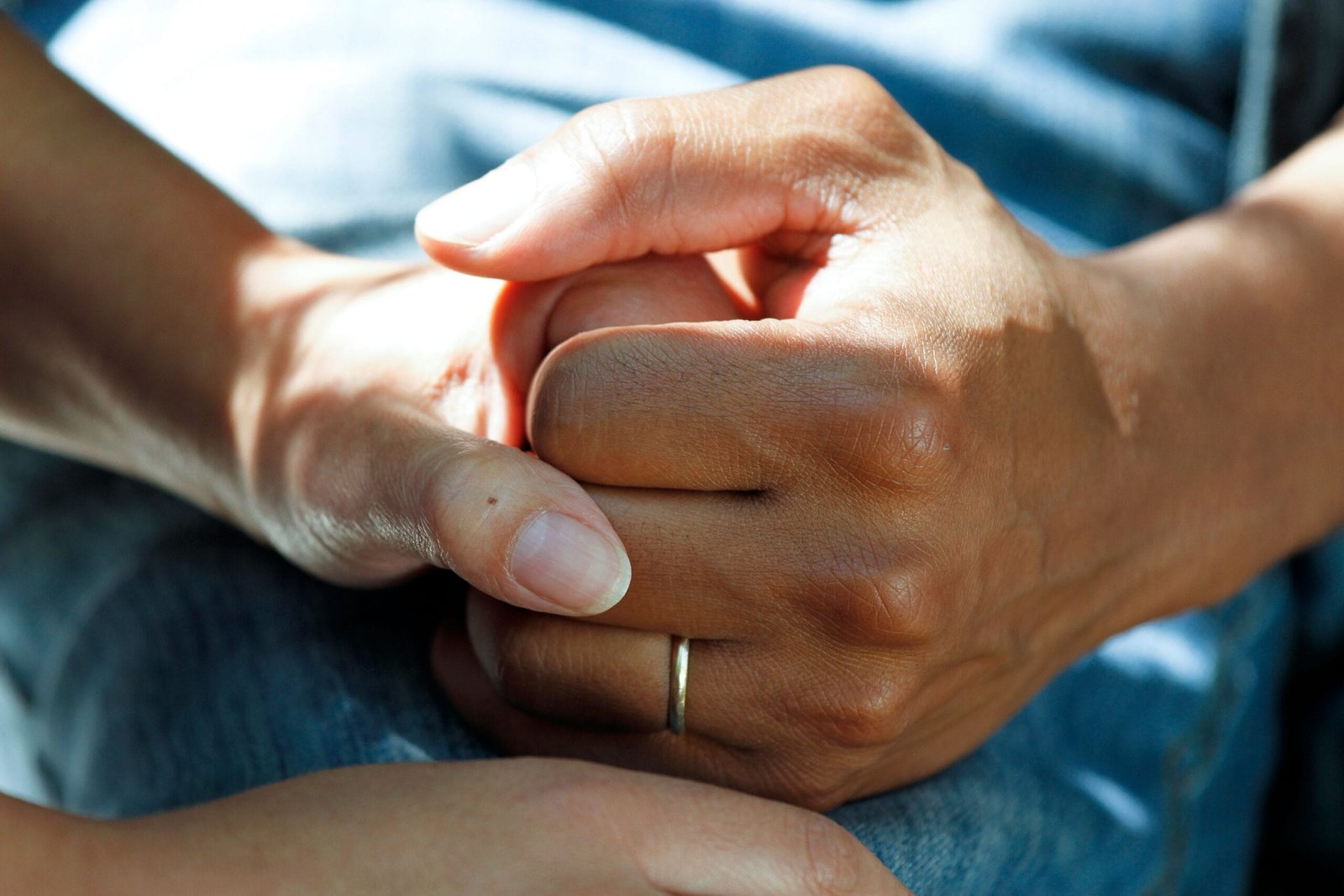Introduction to rTMS
Repetitive Transcranial Magnetic Stimulation (rTMS) is a non-invasive neuromodulation technique designed primarily to treat various neurological and psychiatric disorders. This innovative approach involves the application of magnetic fields to stimulate nerve cells in the brain, targeting specific areas associated with mental health conditions. The origins of rTMS can be traced back to the late 1980s when it was developed as a tool for investigating brain functions. Since then, it has evolved into a viable treatment modality for conditions such as obsessive-compulsive disorder (OCD) and depression.
The fundamental principle of rTMS relies on magnetic fields generated by a coil placed against the scalp. These magnetic pulses induce small electrical currents in the underlying brain tissue, modulating neuronal activity. This targeted stimulation can help to alter the neural pathways involved in mood regulation and compulsive behaviors, offering a new avenue for individuals who have not responded to traditional treatment methods, such as psychotherapy and medication.
Over the years, rTMS has gained increasing attention due to its non-invasive nature and relatively low side effects compared to other interventions. Patients do not require anesthesia during the procedure and can resume normal activities immediately afterward, making it an appealing option for many struggling with OCD and depression. As research on rTMS continues to expand, its effectiveness is being recognized more widely, leading to greater acceptance among healthcare providers and patients alike.
With the growing prevalence of mental health issues globally, rTMS represents a promising alternative for those seeking relief from their symptoms. As this treatment gains traction, its potential to improve the lives of those affected by OCD and depression cannot be overstated, prompting further exploration into its mechanisms and applications in mental health care.
Understanding OCD and Depression
Obsessive-Compulsive Disorder (OCD) and depression are two prevalent mental health conditions that significantly affect individuals’ lives globally. OCD is characterized by persistent, unwanted thoughts known as obsessions, which compel individuals to engage in repetitive behaviors or compulsions. These compulsions serve as attempts to reduce the anxiety generated by the obsessions. Common symptoms of OCD can include excessive handwashing, checking behaviors, and intrusive thoughts, all of which can interfere with daily functioning.
On the other hand, depression primarily manifests through persistent feelings of sadness, hopelessness, and a lack of interest or pleasure in previously enjoyed activities. Individuals with depression may also experience fatigue, changes in appetite, and issues with concentration. Both OCD and depression can occur simultaneously, complicating diagnosis and treatment. The intricate interplay between these conditions can exacerbate symptoms, leading to a significant decline in quality of life.
The etiology of these mental health disorders is multifaceted, involving genetic, environmental, and neurobiological factors. Neuroimaging studies have identified abnormalities in specific brain regions, such as the orbitofrontal cortex, anterior cingulate cortex, and basal ganglia, contributing to the development and maintenance of OCD and depression. These findings highlight the importance of understanding the underlying neurological mechanisms when considering treatment options.
Traditional treatment methodologies for OCD often include cognitive-behavioral therapy (CBT) and pharmacological interventions, such as selective serotonin reuptake inhibitors (SSRIs). While these approaches can be effective for many patients, they do not work universally, and some individuals experience debilitating side effects. Thus, the search for innovative therapies continues, leading to the emergence of repetitive transcranial magnetic stimulation (rTMS) as a promising alternative for individuals suffering from OCD and depression, aiming to address the neurological underpinnings of these disorders.
The Mechanism of rTMS
Repetitive transcranial magnetic stimulation (rTMS) represents a novel approach in the treatment of various mental health disorders, particularly obsessive-compulsive disorder (OCD) and depression. This technique employs magnetic fields to stimulate specific areas of the brain, primarily influencing the prefrontal cortex, which is known to play a crucial role in mood regulation and cognitive function.
During rTMS therapy, a magnetic coil is placed on the scalp, generating magnetic pulses that induce electrical currents within the targeted brain regions. These currents engage neurons by depolarizing them, ultimately eliciting action potentials. The stimulation activates excitatory neurons, which in turn can modulate the activity of neighboring inhibitory neurons, leading to a cascade of neurobiological changes. This effect is particularly significant in the context of OCD, where the neural circuits involved often exhibit hyperactivity.
Research indicates that rTMS can lead to alterations in neurotransmitter levels, especially serotonin, dopamine, and norepinephrine, which are critical in the pathophysiology of depression and OCD. By increasing the excitability of cortical neurons and enhancing their connectivity, rTMS helps to rebalance the brain circuits associated with these disorders. As a result, patients often experience a reduction in repetitive thoughts and behaviors characteristic of OCD, and concomitantly a decrease in depressive symptoms.
Additionally, the mechanism of rTMS extends beyond mere stimulation. It can drive long-term potentiation and neuroplasticity, essential processes for learning and adaptation. This is especially relevant when addressing chronic mental health issues, where traditional methods may fall short. By fostering a more adaptable neural landscape, rTMS therapy holds promise as a potent intervention for individuals grappling with the complexities of OCD and depression.
Clinical Applications of rTMS
Repetitive Transcranial Magnetic Stimulation (rTMS) has emerged as a promising therapeutic option for various psychiatric disorders, notably obsessive-compulsive disorder (OCD) and depression. This non-invasive brain stimulation technique involves the use of magnetic fields to influence neuronal activity, showing significant potential in modifying the underlying neural circuits associated with these conditions. Research has demonstrated that rTMS can markedly reduce symptoms of depression and OCD, providing relief for those who may not respond adequately to traditional treatment methods such as pharmacotherapy or cognitive-behavioral therapy.
Several clinical trials have assessed the efficacy of rTMS in treating depression, highlighting its ability to improve patient outcomes across diverse demographics. For instance, a meta-analysis has indicated that rTMS not only leads to a considerable reduction in depression severity but also promotes higher response and remission rates compared to placebo treatments. Patients undergoing rTMS often experience a significant decrease in depressive symptoms, which can be maintained for several weeks, if not months, after completing a treatment protocol. Additionally, this technique has demonstrated a favorable safety profile, with minimal side effects reported.
In the context of OCD, rTMS has been utilized to target specific brain regions implicated in the pathology of the disorder, such as the dorsolateral prefrontal cortex. Studies suggest that rTMS can reduce repetitive thoughts and compulsive behaviors that characterize OCD, enhancing both the quality of life and functionality of affected individuals. Compared to conventional treatments, rTMS holds promise as a valuable adjunct or alternative intervention, particularly for patients who have not achieved sufficient improvement from other therapeutic modalities.
In conclusion, the clinical applications of rTMS in managing OCD and depression reveal it as an effective option that warrants further exploration and integration into standardized treatment protocols, especially for patients who have often exhausted other alternatives.
Safety and Side Effects of rTMS
Repetitive Transcranial Magnetic Stimulation (rTMS) is recognized as a leading non-invasive treatment modality for mental health conditions such as obsessive-compulsive disorder (OCD) and depression. Safety is a paramount concern when considering any therapeutic approach, and rTMS is generally well-tolerated among patients. The technique involves the application of magnetic fields to stimulate nerve cells in the brain, particularly targeting areas known to regulate mood and anxiety. Unlike traditional pharmacological treatments, rTMS has shown a safety profile that is regarded as favorable.
Common side effects associated with rTMS are typically mild and transient. Patients may experience localized discomfort at the site of stimulation, headaches, or fatigue following a session. These effects diminish quickly and do not typically impact the continuation of treatment. Unlike pharmacological interventions, which may have a broader and more serious spectrum of side effects, the adverse reactions to rTMS are largely manageable, making it a viable alternative for those hesitant to pursue medication.
It is also important to consider contraindications. Patients with metal implants in or around the head, individuals with a history of seizures, or those with certain neurological conditions may not be suitable candidates for rTMS therapy. Hence, a thorough pre-treatment screening is essential to mitigate potential risks. Nonetheless, many healthcare professionals endorse the safety of rTMS, citing abundant clinical evidence and patient testimonials that highlight its effectiveness without the severe side effects associated with many psychiatric medications.
In summary, while rTMS may not be suitable for everyone, its profile as a safe treatment for OCD and depression—with manageable side effects and strict contraindications—positions it as a prominent option for those seeking relief from their symptoms.
The rTMS Treatment Process
The process of repetitive transcranial magnetic stimulation (rTMS) treatment involves several carefully structured steps aimed at alleviating symptoms of both obsessive-compulsive disorder (OCD) and depression. Initially, patients undergo a comprehensive assessment conducted by qualified mental health professionals. This assessment includes a detailed review of the patient’s medical history, current symptoms, and prior treatments, helping to determine if rTMS is an appropriate option for their condition.
Once the evaluation is complete, the next step involves developing a personalized treatment protocol tailored specifically to the individual’s needs. The frequency of rTMS sessions is typically scheduled five times a week, although some variations may exist based on clinician recommendations or patient needs. Each session generally lasts about 20 to 40 minutes, making it a convenient option for those with busy schedules.
During the rTMS session, patients will be seated comfortably, and a magnetic coil will be positioned against their scalp, specifically targeting areas of the brain implicated in OCD and depression. The procedure is non-invasive, and patients usually experience minimal discomfort, often described merely as a tapping sensation on the head. It is essential for patients to remain awake and relaxed throughout each session, as this can enhance the effectiveness of the treatment.
As treatment progresses, patients may begin to notice gradual improvements in their symptoms. However, each individual’s response to rTMS can vary significantly. It is crucial for patients to maintain open communication with their healthcare providers during this phase, as adjustments to the treatment plan may be necessary. After completing the entire course of rTMS sessions, follow-up evaluations are conducted to assess the effectiveness of the treatment and monitor for any potential side effects, ultimately guiding future mental health therapy.
Future Perspectives: Innovations in rTMS
The landscape of mental health treatment is rapidly evolving, particularly with the advancements in Repetitive Transcranial Magnetic Stimulation (rTMS) therapies. As research continues to explore the intricacies of OCD and depression, the methodologies surrounding rTMS are becoming increasingly sophisticated. One significant area of focus is the personalization of rTMS protocols, aiming to tailor treatments based on individual brain patterns, symptoms, and responses to past therapies. This personalized approach could significantly enhance treatment efficacy for those suffering from mental health disorders.
Emerging techniques are already showcasing promising results. For instance, researchers are investigating the application of theta burst stimulation, a novel form of rTMS that delivers bursts of magnetic energy in a rapidly repeating pattern. This method may reduce treatment sessions and increase patient comfort, making rTMS more accessible to those in need. Moreover, the exploration of multi-site stimulation involves targeting multiple brain areas simultaneously, potentially enriching therapeutic outcomes for OCD and depression.
Technological advancements also play a crucial role in the future of rTMS interventions. The integration of real-time neuroimaging is a groundbreaking development that allows clinicians to visualize brain activity and make real-time adjustments to the rTMS protocol. This could lead to more immediate and optimized treatments, as practitioners will gain a deeper understanding of the brain’s mechanisms during stimulation.
As science progresses, the synergy of rTMS with other modalities, like psychotherapy and pharmacological treatments, may become a prevalent avenue for managing OCD and depression. By combining these approaches, the mental health field could offer more comprehensive strategies that address the myriad factors contributing to these disorders. As the body of research expands, the future of rTMS appears promising, potentially reshaping how clinicians approach mental health treatment and ultimately improving patient outcomes.
Patient Experiences and Case Studies
The impact of repetitive transcranial magnetic stimulation (rTMS) on individuals suffering from obsessive-compulsive disorder (OCD) and depression has been documented through numerous patient experiences and case studies. One notable example involves a 34-year-old woman named Sarah, who had battled severe OCD for over a decade. Her condition manifested through intrusive thoughts and compulsive behaviors that impeded her daily functioning. After exploring various treatment options, including therapy and medication with limited success, Sarah turned to rTMS. Over the course of several weeks of treatment, she reported a significant decrease in both the frequency and intensity of her obsessive thoughts. This transformative experience not only improved her quality of life but also empowered her to engage more fully in personal relationships and work.
Another case involves Mark, a 42-year-old male diagnosed with major depressive disorder. Mark had attempted multiple antidepressants without satisfactory results. Feeling hopeless, he sought alternative solutions and was introduced to rTMS. Mark underwent five sessions per week for six weeks, which led to notable improvements in his mood. He recounted how rTMS allowed him to regain motivation and reduce the pervasive feelings of despair that had overshadowed his life. However, it is important to recognize that such experiences can vary. While many patients experience positive outcomes, others may face challenges during the treatment process.
For some individuals, including a man named George, rTMS treatment was met with initial skepticism but eventually yielded remarkable improvements in his obsessive-compulsive symptoms. George’s journey underscores the importance of setting realistic expectations and maintaining open communication with healthcare providers throughout the treatment. As these patient stories illustrate, rTMS has the potential to be a revolutionary treatment modality, offering hope for those suffering from the debilitating effects of OCD and depression.
Conclusion and Resources
In recent years, repetitive transcranial magnetic stimulation (rTMS) has emerged as a significant therapeutic option for individuals suffering from obsessive-compulsive disorder (OCD) and depression. The method’s non-invasive nature, coupled with its ability to modulate neuronal activity, makes it an attractive alternative for patients who have not found relief through traditional treatment methods. By targeting specific areas of the brain, rTMS offers hope for reducing symptoms where conventional therapies may have fallen short.
This innovative approach has undergone extensive research, illustrating its efficacy and safety profile. Studies have shown that rTMS can lead to substantial improvements in both OCD and depression symptoms, providing patients with a renewed sense of control over their mental health. Importantly, rTMS presents an option that minimizes the side effects commonly associated with pharmacological treatments, making it suitable for a broader range of patients.
For those considering rTMS as a treatment alternative, several resources are available to facilitate informed decision-making. Readers are encouraged to explore research studies published in reputable journals, which provide deeper insights into the effectiveness of rTMS. Additionally, treatment centers specializing in rTMS can be found across the country, offering guidance and therapeutic services to those in need. It may also be beneficial to engage with support groups, where individuals can share experiences and gain support from others navigating similar challenges.
In conclusion, rTMS represents a promising development in the field of mental health treatment, particularly for those dealing with OCD and depression. As further advancements are made, the understanding and accessibility of this treatment option will undoubtedly grow, ultimately benefiting many individuals seeking relief from their mental health struggles. For more information, consider exploring the resources listed below:



